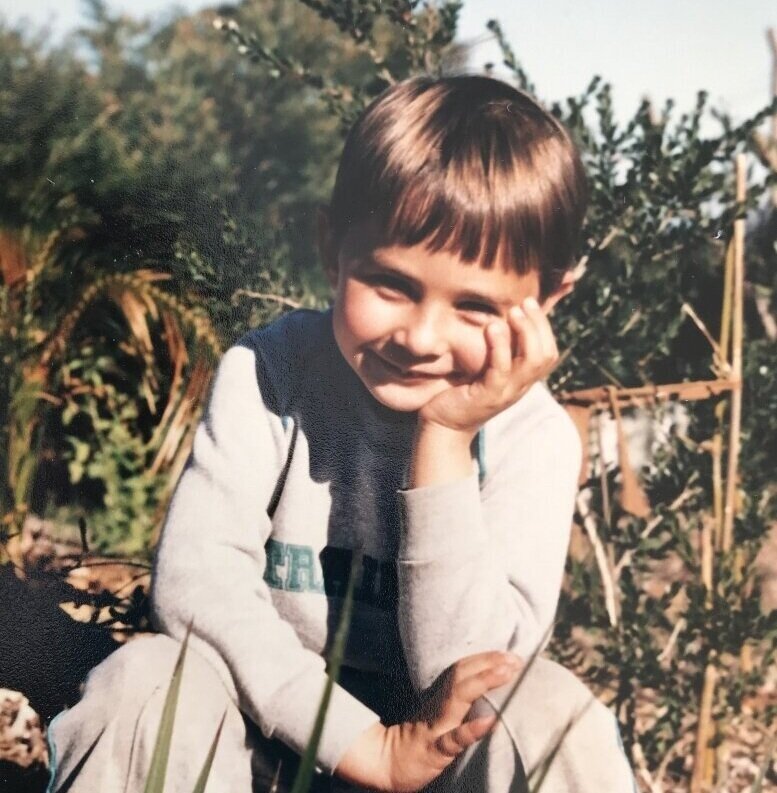Meet the photographer - Jordan Cantelo
/Jordan Cantelo
Landscape Photographer, Western Australia
Climate enthusiasts are not limited to farmers, graziers and commodity analysis. In fact, weather and landscape photography require their own unique understanding of climate science and degree of weather literacy. Planning, travelling and capturing images can be laden with risk and their own distinctive set of challenges.
Farmer Forecast caught up with West Australian photographer, artist and firefighter Jordan Cantelo about his foray into loving the landscape, climate and adventures capturing stunning images of weather in the outback. Jordan exudes enthusiasm and energy for his passion for nature and the outback, with a kind message for all of our farmers at the end of this interview.
What inspired you to become a landscape photographer and at what age was this?
My love of photography started when I was fortunate enough to travel overseas when I was 15yrs old. The opportunity to see some amazing scenery in the French Alps and then capture that with my point and shoot camera - then see it in print was awesome.
It was a few years later that I eventually purchased a DSLR. My job had me travelling right around the state and I wanted to capture the amazing landscape Western Australia had to offer, it is then that my love of photography really took off.
I would make note of the places I visited during my work trips, then head back during holidays and bring the camera with me to capture it. We are so lucky to live in such an amazing corner of the world and being able to capture moments and then print them is very rewarding.
Do you have any extended family or other connections in the outback or with agriculture more generally?
No extended family in the outback or with agriculture, however, we have family friends who own a dairy farm in the South West near Busselton. I do regularly bump into farmers when I am photographing out in the Wheatbelt.
Wyalkatchem Wheatbelt, WA
What are your favourite activities or interests away from photography that help recharge you for work mode? (e.g. sports, cultural, family, music etc.)
Certainly family time. I use to play in the local football team and had a few years off, then joined another team when I moved to the country, however, a quick run with injuries during the pre-season put an end to that short revival. My normal day to day job is extremely busy during the Autumn, Summer and Spring times with extended time away from home, so my relaxing time away from photography includes spending as much time as I can with my wife and my two sons.
Dandaregan wheatbelt, WA
DALWALLINU MIDWEST, WA
ARIANO MIDWEST, WA
DOWERIN WHEATBELT, WA
Do you follow climate influences to help better understand opportunities for weather events? I.e. El Niño-Southern Oscillation phases impacting cyclone frequency or wet seasons?
I watch out for ENSO for a curiosity factor but living in Western Australia I tend to follow the Indian Ocean Dipole more so, even though there is a link the IOD has with ENSO events. I do tend to watch out for these climate factors planning my big photography trips to the Kimberley. A forecasted good wet season can sometimes mean a very active build up in the top end. If the forecasted phase is not looking so promising and a drier season is forecast, then this tends to affect when and where I travel to, or if I go at all.
Where do you go or what sites do you visit to keep up with weather and climate info?
I use a couple of websites mainly for weather information. For climate information, I tend to use the official Australian Bureau of Meteorology website (http://www.bom.gov.au) and for my day to day weather, and while photographing storms I use the BOM website, as well as Weatherzone (http://www.weatherzone.com.au).
Phases of the Madden-Julian Oscillation impacts weather during the monsoon – do you track the MJO prior to going out and travelling?
I tend to track the MJO when I am around the Pilbara and Kimberley regions while on my photography trips. When the MJO is in the region, the chance of cyclones, and heavy rain will determine where I can and cannot go.
When the MJO is forecast to be in the region, I will watch for enhanced rainfall especially when I am in the eastern Kimberley. It is a 10-11hr drive from Broome to Kununurra, and when it floods out that way, you can get stuck quickly.
So yes, I do watch the MJO prior to travelling into the Kimberley.
Wyalkatchem Wheatbelt, WA
Storm chasing and thundercloud photography is a speciality of yours. Have you had any near misses or ever been caught or bogged in a severe storm?
Storm photography is inherently dangerous. To capture the images I am looking for, I tend to set myself up in some precarious positions. It requires a bit of planning, knowing your roads, knowing the limits, and knowing when to turn around. I think this has saved me on a few occasions, especially when heavy rain affects unsealed roads and flash floods that make roads impassable. I have had a few close calls with lightning, heavy rain and hail; however, one time stands out. Recently I was in the Pilbara with my brother near Karijini National Park. We were photographing a series of storm cells that had developed during the heat of the day. The clouds were extremely dark with big downpours of rain coming down in sheets. The lightning was not extremely active, with most lightning embedded in the rain. While we were setting up, out of what seemed to be nowhere, a lightning bolt landed not too far behind us. The crack of thunder was almost instantaneous, so the strike was extremely close. We believe it was on the hill that was directly behind where we were setting up (no more than 150-200m away). Lightning can strike up to 20km away from the centre of a thunderstorm, so if you are within that 20km, you are in the strike zone. While you must be extremely unfortunate for that to occur, it does sometimes occur, and people have been caught out on many occasions.
Where are your favourite areas for weather photography that still make you excited to visit, or you feel completely at peace when in that spot?
Anywhere in Western Australia is special. From the dramatic ancient landscapes of the Pilbara to the Tropical Savannah of the Kimberley, to the crashing big swell southwest coasts and to the flat and equally amazing farming country of the Wheatbelt, there is something to see all the time. Watching these huge thunderstorms form 20,30,40 thousand feet into the air from what was blue skies only an hour earlier is mind-blowing. While I really do love watching these cells blow up into the skies, I do prefer for them to be in area’s that are extremely remote and away from farmlands.
A message to our farmers from Jordan:
I thoroughly appreciate and hugely admire the work that every farmer does in getting a crop ready for harvest, and that I understand that my photography sometimes will capture severe storm activity that may affect the livelihood of others who have put blood, sweat, tears and many thousands of hours of work in to get a crop ready to harvest.
The unfortunate side story to being out and photographing these storms is that sometimes these severe storms bring heavy rain, severe winds, and large hail to the area’s that they form. These storms can have a devastating effect on farms in the line of fire and on occasions. I have seen hail and lightning cause a terrible amount of damage to crops that are ready for harvest. The work that the farmers do to get the harvest off in a timely manner is extraordinary. It’s not uncommon for me to be out at all hours of the night during harvest time watching the weather and on the horizon, there are the high beam lights of farming equipment going back and forth getting the crop off.
I can only appreciate from the outside looking in, that the stresses that these storms can bring during these periods.










































